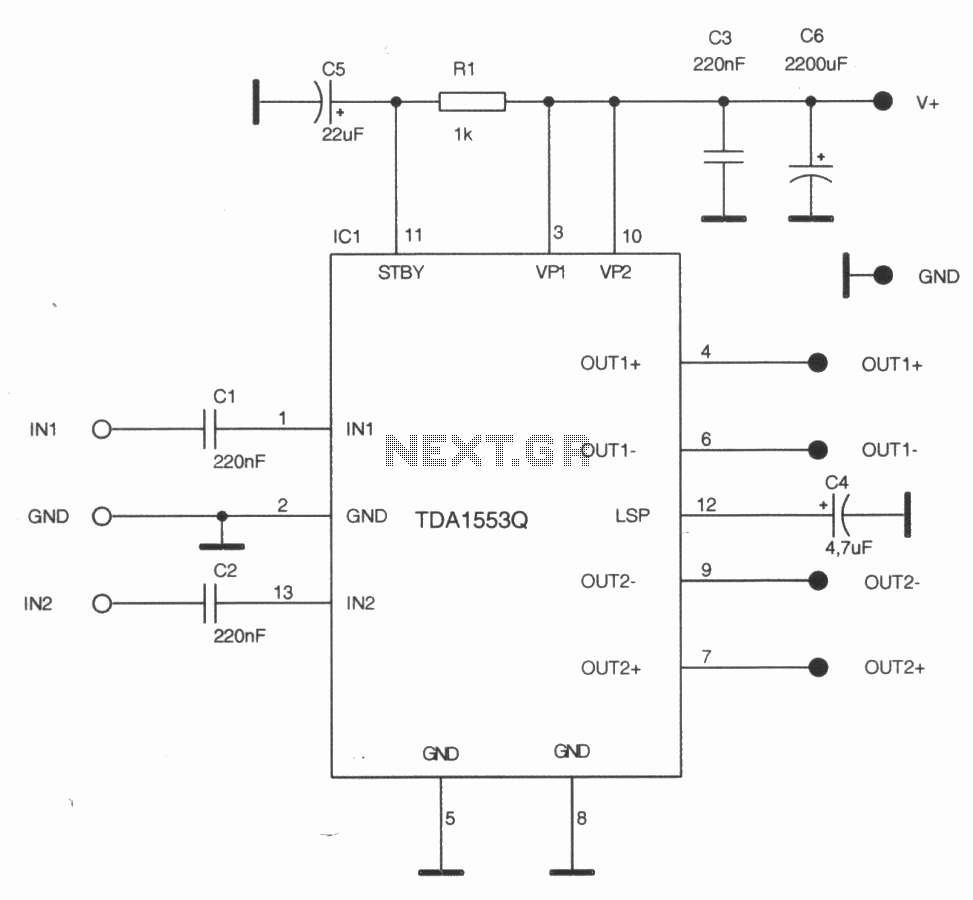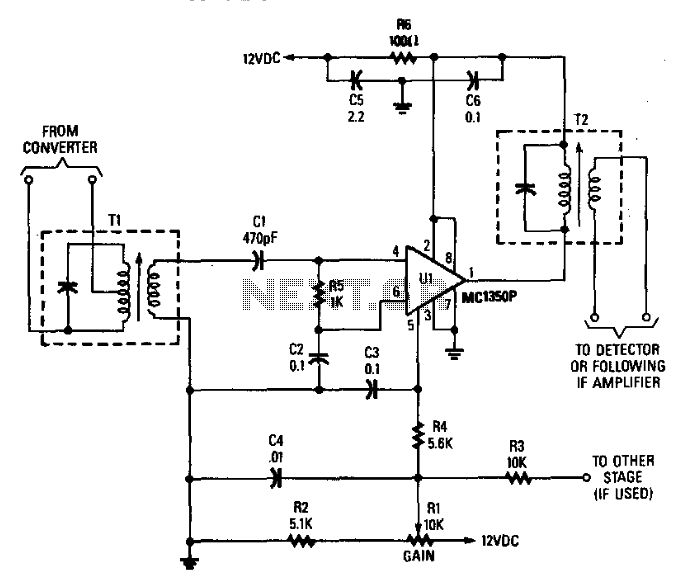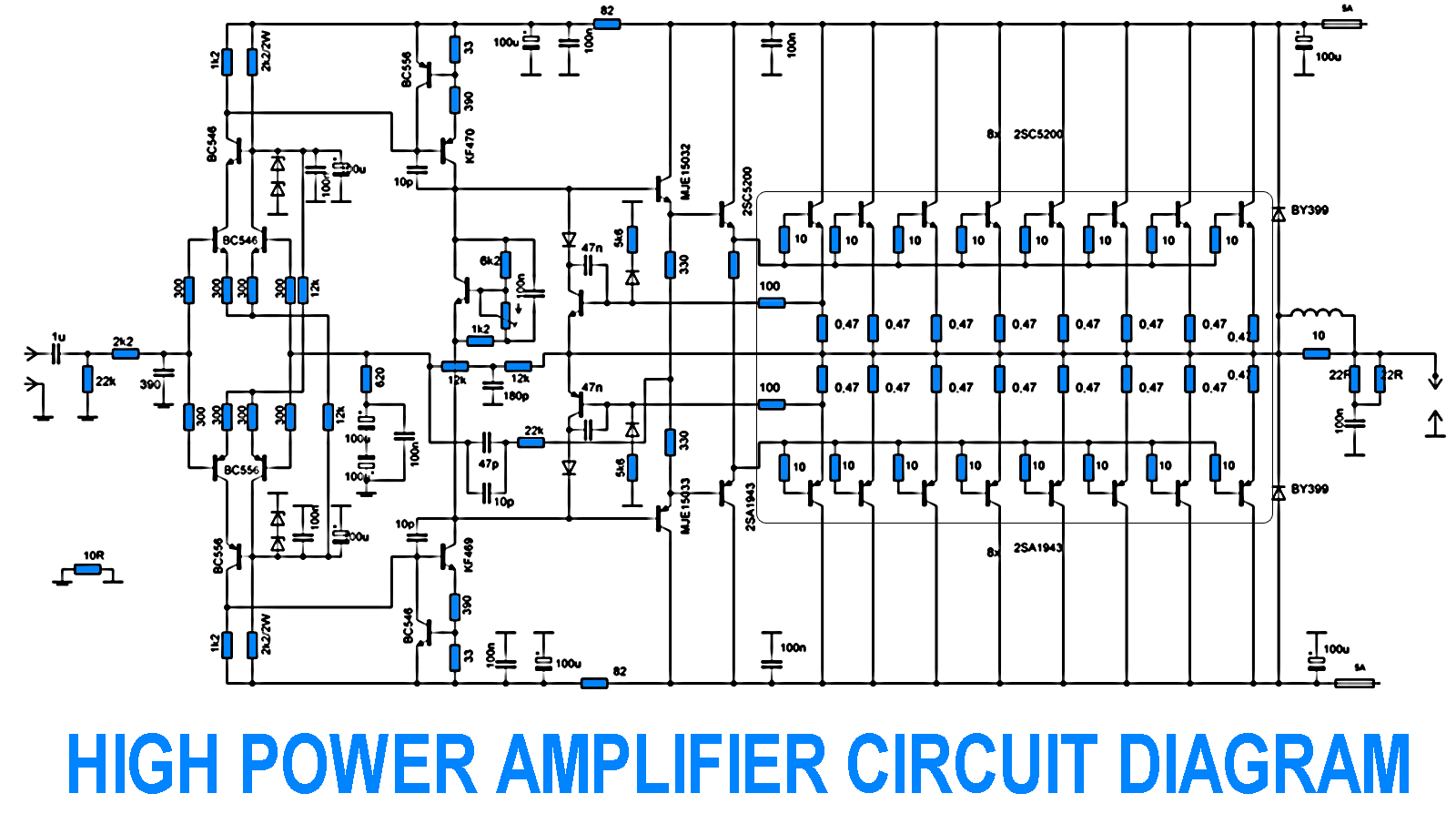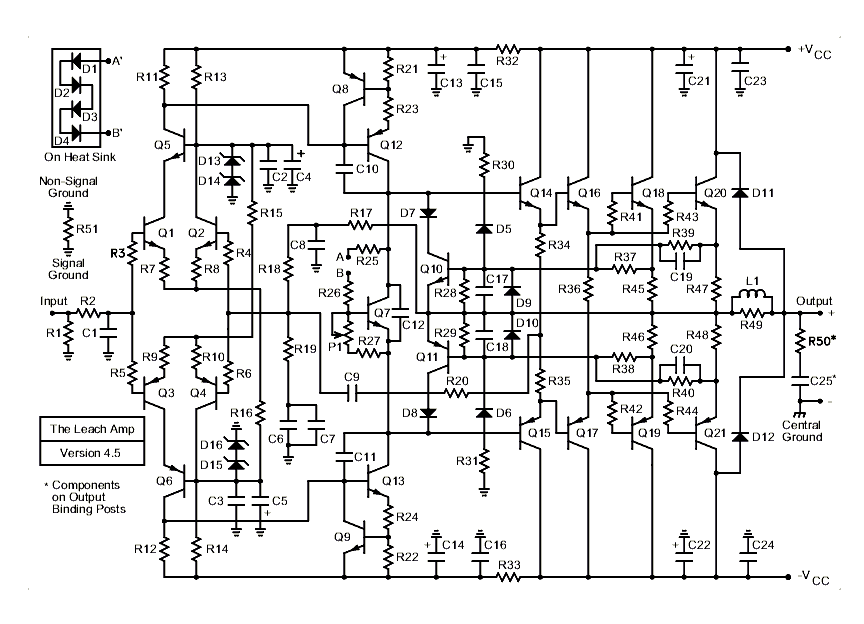
LM386 Audio Amplifier
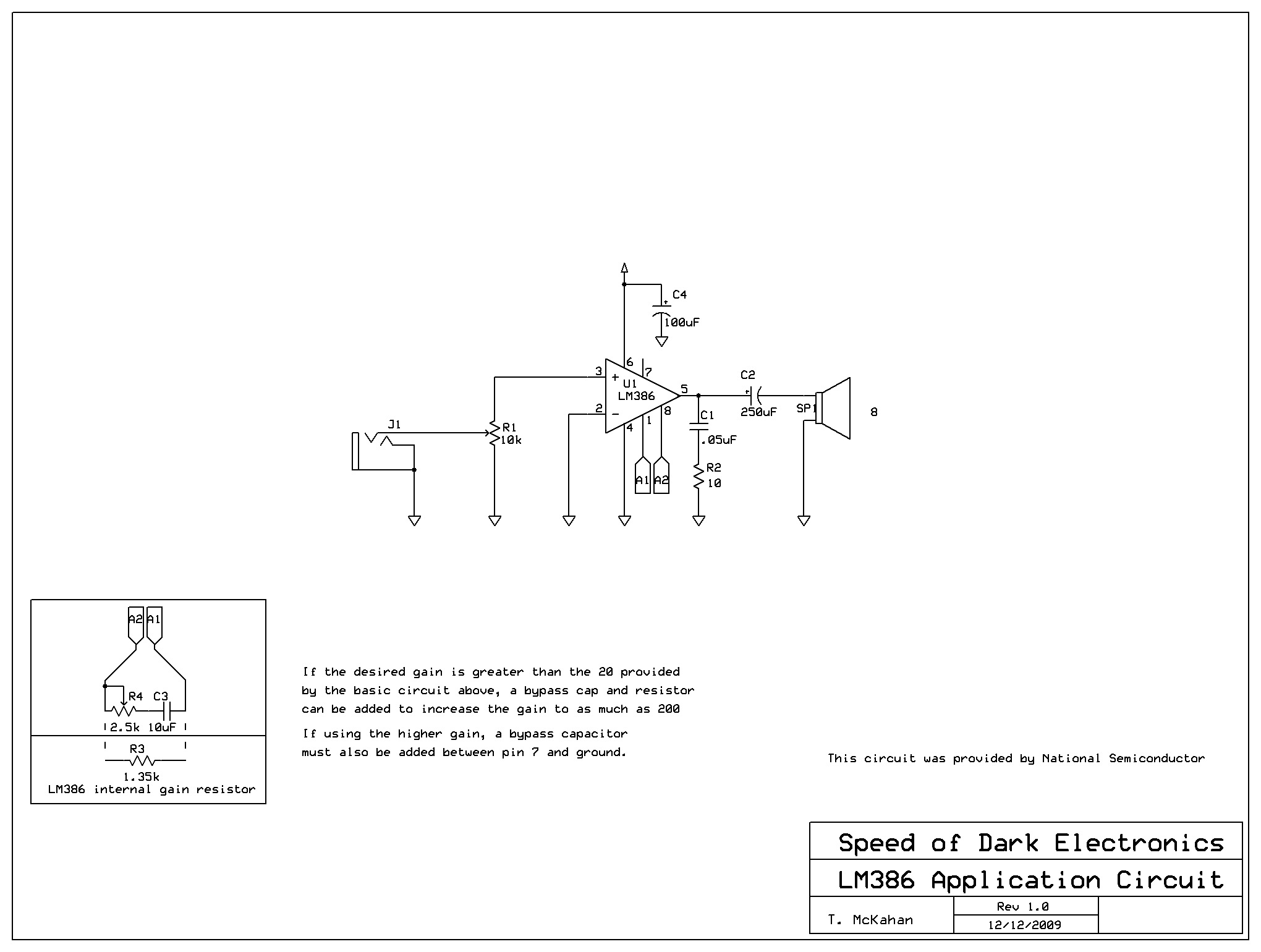
An LM386 Low Voltage Audio Amplifier was utilized for a project. The associated data sheet from National Semiconductor indicates that only five components are necessary for achieving a gain of 20, while seven components are required for a gain of 200. After constructing the five-component version and connecting it to an MP3 player powered by a 9V wall transformer, excessive noise was encountered. It was later determined that an additional sixth component, a large capacitor on the power supply, was essential. This is a common practice, even when using a stable power source like a battery. The circuit is characterized by its simplicity and effectiveness.
The LM386 is a low-power audio amplifier designed for battery-operated devices. It is capable of providing a gain of 20, which can be increased to 200 with the appropriate configuration. The basic circuit requires minimal components, typically including the LM386 IC, a power supply, input and output capacitors, and resistors for gain adjustment.
In the standard configuration for a gain of 20, the circuit consists of an LM386, two capacitors (C1 and C2), and a resistor (R1). The input capacitor (C1) blocks any DC offset from the audio source, allowing only AC signals to pass through. The output capacitor (C2) serves to remove DC from the output, ensuring that only the amplified AC audio signal is delivered to the speaker or next stage of amplification.
For higher gains, external resistors can be added between pins 1 and 8 of the LM386, which allows for a gain of up to 200. This configuration is beneficial for applications requiring stronger audio output. However, as noted, it is crucial to include a decoupling capacitor on the power supply line to filter out noise and stabilize the voltage. The recommended value for this capacitor can vary, but a typical choice is between 100 µF to 1000 µF, depending on the specific requirements of the application.
In summary, the LM386 circuit is not only simple but also versatile, making it an excellent choice for various audio amplification tasks. Proper implementation of the power supply decoupling capacitor is essential to minimize noise and ensure optimal performance.I picked up an LM386 Low Voltage Audio Amplifier. A little poking around and I found National Semiconductor`s data sheet, showing a schematicthat requires only 5 components for a gain of 20, and 7 for a gain of 200. Being the skeptical man I am, I built the 5 component variation and plugged in my MP3 player. I used a 9V wall transformer for power. Lots of noise resulted. Well, I discovered the need for a 6th component: Big capacitor on the power supply. It`s usually a rule of thumb to have one anyway, even if you`re running off of a stable supply like a battery. This circuit is simple and effective. 🔗 External reference
The LM386 is a low-power audio amplifier designed for battery-operated devices. It is capable of providing a gain of 20, which can be increased to 200 with the appropriate configuration. The basic circuit requires minimal components, typically including the LM386 IC, a power supply, input and output capacitors, and resistors for gain adjustment.
In the standard configuration for a gain of 20, the circuit consists of an LM386, two capacitors (C1 and C2), and a resistor (R1). The input capacitor (C1) blocks any DC offset from the audio source, allowing only AC signals to pass through. The output capacitor (C2) serves to remove DC from the output, ensuring that only the amplified AC audio signal is delivered to the speaker or next stage of amplification.
For higher gains, external resistors can be added between pins 1 and 8 of the LM386, which allows for a gain of up to 200. This configuration is beneficial for applications requiring stronger audio output. However, as noted, it is crucial to include a decoupling capacitor on the power supply line to filter out noise and stabilize the voltage. The recommended value for this capacitor can vary, but a typical choice is between 100 µF to 1000 µF, depending on the specific requirements of the application.
In summary, the LM386 circuit is not only simple but also versatile, making it an excellent choice for various audio amplification tasks. Proper implementation of the power supply decoupling capacitor is essential to minimize noise and ensure optimal performance.I picked up an LM386 Low Voltage Audio Amplifier. A little poking around and I found National Semiconductor`s data sheet, showing a schematicthat requires only 5 components for a gain of 20, and 7 for a gain of 200. Being the skeptical man I am, I built the 5 component variation and plugged in my MP3 player. I used a 9V wall transformer for power. Lots of noise resulted. Well, I discovered the need for a 6th component: Big capacitor on the power supply. It`s usually a rule of thumb to have one anyway, even if you`re running off of a stable supply like a battery. This circuit is simple and effective. 🔗 External reference
